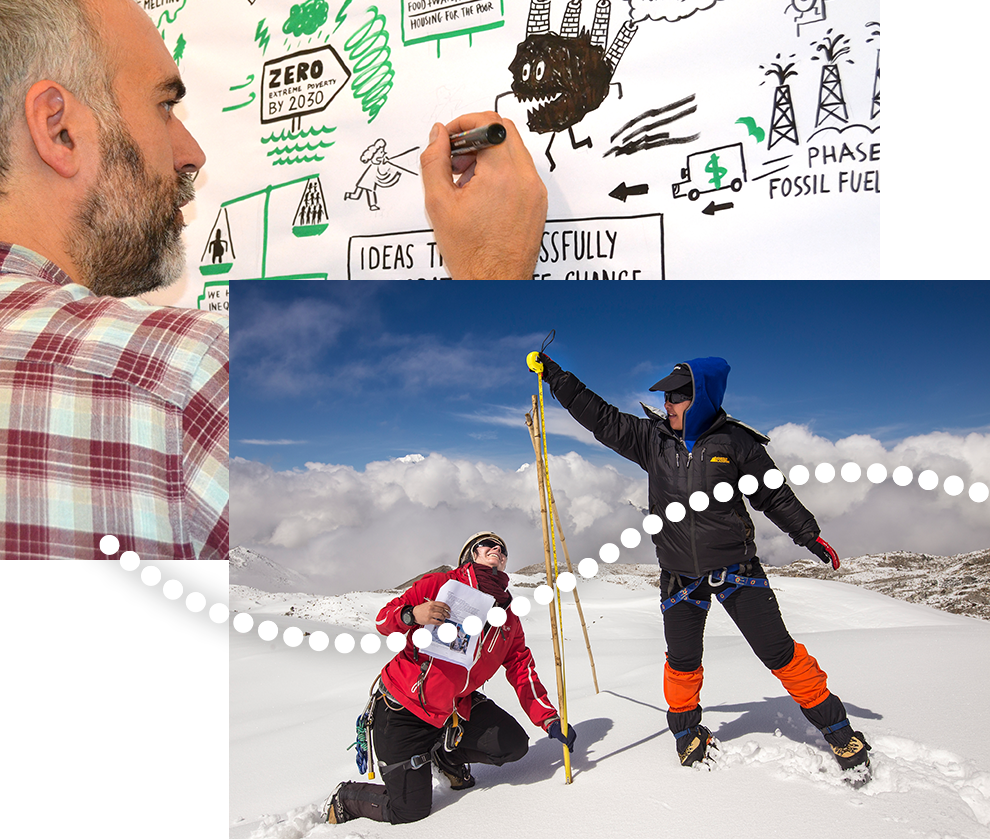Watch the adaptation blind spot

Indirect impacts in Asia’s LDCs
This blog is reposted from the Stockholm Environment Institute.
National Adaptation Plans (NAPs) are one instrument to identify adaptation needs and work towards “effective and efficient adaptation.” The idea is that even those countries with the least resources and capacities, the so-called least developed countries, or LDCs, are enabled to draft these plans.
“More needs to be done to enable effective and efficient adaptation”. A clear statement made in the2018 Adaptation Gap report issued by UN Environment.
But a recent training workshop for Asian LDCs revealed a hard truth: that in one of the world’s regions most vulnerable to climate change, effective and efficient adaptation planning is only in its very early stages. What’s more, one vital aspect of climate vulnerability has so far not been on the radar – that of indirect climate risks.
Climate vulnerability? Yes. Adaptation planning? Not so much.
Asia is already experiencing warming trends and extreme temperatures. Extreme climate events are already having an impact on human health, security, livelihoods, and poverty, and are set to increase, according to the 2014 IPCC report. The Asian Development Bank points out that six of the world’s ten countries most affected by climate change are in Asia.
Yet countries – especially least developed ones – are still grappling to fully understand how they are being impacted by climate change. While steps are being taken in the ground to adapt to existing impacts, there is little in the way of coordinated action.
This was one of the key takeaways from the recent workshop in Busan, South Korea. The workshop was delivered by UNDP and UN Environment together with SEI and others, and convened eight countries from the region – Afghanistan, Bangladesh, Cambodia, Laos, Bhutan, Myanmar, Timor Leste, and Nepal.
Unaware of indirect climate risks
The other key takeaway was this: all of these countries are exposed to indirect or transboundary climate risks that they are hardly aware of.
Indirect impacts can be sorted into four pathways:
- the people pathway, including climate-related changes to cross-border migration, as well as public health impacts or changes in tourism travel
- the bio-physical pathway, which includes climate-driven changes in the flow of ecosystem services or in the flow of water and other resources from transboundary systems.
- the trade pathway, which covers changes in the prices, availability or quality of goods and services imported from other countries, as well as changes in demand for key national exports
- the finance pathway, which concerns changes in the flow of capital.
The assumption at the start of the workshop was that the countries taking part would primarily be affected by indirect climate risks across the trade pathway. Timor Leste offers a clear example, as it is highly dependent on rice imports from Thailand and Vietnam. Should these countries export less rice to Timor Leste because climate change is reducing the rice crop, that would affect Timor Leste.
But indirect climate risk could also impact on Timor Leste via the finance pathway, because it is very dependent on oil, foreign aid and remittances from East Timorese living overseas. Oil and foreign aid are the first and second largest sources of foreign revenue while remittances from overseas East Timorese is the third. The impact of climate change on the future demand for fossil fuels, the priorities of donor countries, and income of overseas East Timorese would shake the foundation of Timor Leste’s economy.
Need to integrate indirect climate risk into NAP guidance
Least developed countries such as Timor Leste, Cambodia and Bangladesh receive guidance to prepare their national adaptation plans, for example from the Least Developed Country Expert Group (LEG). The LEG’s Technical Guidelines for the National Adaptation Plan Process set out two steps for preparing a NAP. The first is to analyse “current climate and future climate change scenarios”, and the second is to “assess climate vulnerabilities and identify adaptation options at the sector, subnational, national and other appropriate levels”.
The guidelines further recommend that countries ask themselves key questions, such as: “what are the main climate vulnerabilities” of systems, regions or groups that are key to delivering on development priorities? And “what are the expected impacts of climate change?”
It is with regard to just these kinds of questions that there needs to be greater awareness of indirect climate risks. Guidelines should point out, for example, that food security not only depends on domestic production, but also on the price of food crops on international markets, which can be volatile. When it comes to assessing the “expected impacts of climate change,” it is vital that countries are aware that direct climate change impacts in rice producing countries such as Thailand and Vietnam can have an indirect impact on their own food security as well.
Furthermore, adaptation measures taken by certain countries could negatively impact other import-dependent countries. For example, when harvests fail and prices for a food crop rise on global markets, a country might impose export bans to protect its domestic markets. So, what looks like a sensible measure for one country could harm another country’s food security. Adaptation is not always a benign process, therefore NAPs should also consider the effects that adaptation measures may have on the vulnerability of people in other countries.
When the next Adaptation Gap report comes out, it is likely to again highlight the need “to enable effective and efficient adaptation.” But effective adaptation can only be enabled if countries – especially least developed ones – are in a position to assess ALL the impacts of climate change they are expected to face. Including indirect ones.

(0) Comments
There is no contentYou must be logged in to reply.